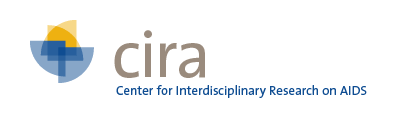| Title | A comparison of adherence assessment methods utilized in the United States: perspectives of researchers, HIV-infected children, and their caregivers. |
| Publication Type | Journal Article |
| Year of Publication | 2009 |
| Authors | Martin, Staci, Deborah K. Elliott-DeSorbo, Sarah Calabrese, Pamela L. Wolters, Gregg Roby, Tara Brennan, and Lauren V. Wood |
| Journal | AIDS patient care and STDs |
| Volume | 23 |
| Issue | 8 |
| Pagination | 593-601 |
| Date Published | 2009 Aug |
| ISSN | 1557-7449 |
| Keywords | Adolescent, Antiretroviral Therapy, Highly Active, Caregivers, Child, Drug Monitoring, Family, Health Personnel, HIV Infections, Humans, Interviews as Topic, Parents, Patient Compliance, Questionnaires, Research Design, United States |
| Abstract | This study sought to elucidate methodological issues in adherence research by comparing multiple methods of assessing adherence to antiretroviral medication. From 2003 to 2004, 24 youths with vertically infected HIV disease (mean age = 14.0 years; range, 8-18) and their caregivers participated in a 6-month study. These children were all on highly active antiretroviral therapy (HAART) and were relatively healthy (mean CD4 absolute count = 711.8 +/- 604.5). Adherence was assessed with the Medication Event Monitoring System (MEMS), pill counts, and interviews. Patients and caregivers completed the Perceptions of Adherence Study Participation (PASP) questionnaire. MEMS provided the most detailed adherence information, and good reliability was indicated by significant correlations with medical markers. Pill counts provided similar adherence rates, while patients and caregivers reported nearly perfect adherence in interviews. Problems were experienced with each method: MEMS were expensive, had cap malfunctions, and lack a consistent guiding principle for data interpretation. With pill counts, families forgot to bring all medication bottles to clinic, and interviews were compromised by social desirability and difficulty reaching families by telephone. Most patients and caregivers believed study participation improved the child's adherence, although PASP ratings were unrelated to adherence at the study endpoint. While MEMS may be most reliable, pill counts offer comparable data and are less costly, while interviews seemed least accurate in this study. Most participants reported positive perceptions of their research experience. A consensus among researchers is needed for defining and measuring adherence, and specific recommendations are offered for achieving this goal. |
| DOI | 10.1007/s10461-009-9532-3 |
| Alternate Journal | AIDS Patient Care STDS |


